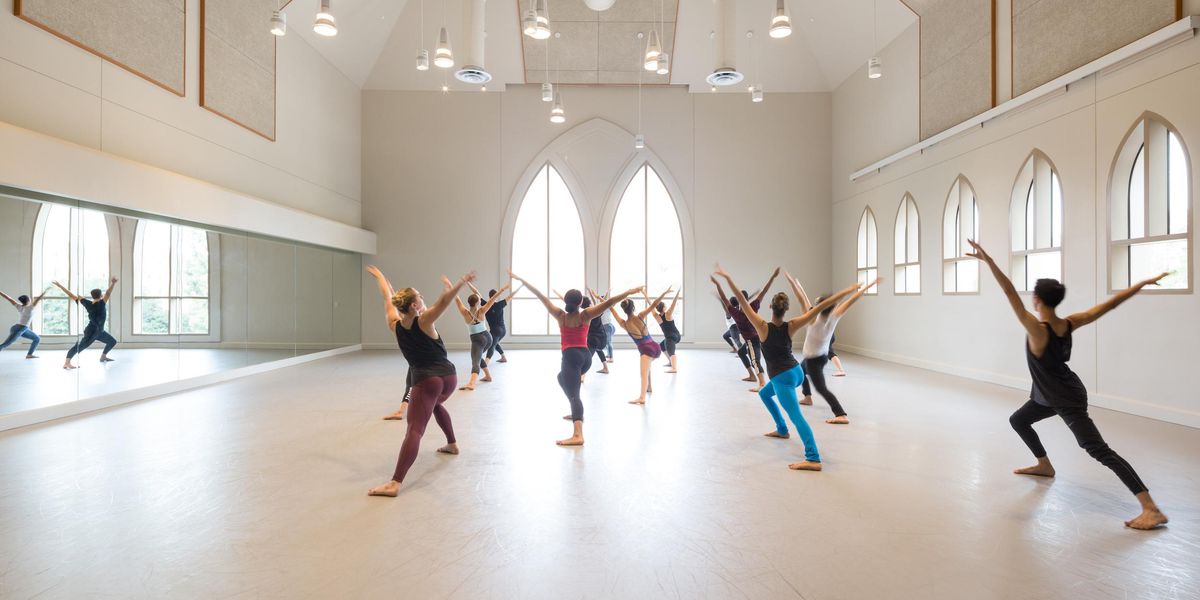Lift Smarter
During dress rehearsal for a restaged version of
The Firebird, it happened again: I felt three of my vertebrae slip out of place, rotating about 15 degrees. By the time the show’s run was over, the pain was intense and lifting my head was impossible. I co-direct Ballet Theatre of Indiana with my wife, Sabrina, so I asked around and found a local expert at St. Vincent Sports Performance: Carrie Gaerte, who’s a physical therapist/certified athletic trainer and a bunhead in equal measure. She identified what was lopsided in my back, and taught me how to retrain my scapulae. My back hadn’t felt as good in 10 years.
Like many men, I rarely prepared for the physical demands of partnering. In dance, we’re taught to carefully warm up our bodies before rehearsing in order to prevent injury. But when it comes to partnering, young men are often handed a woman, told to grab her waist, and lift as high as possible. Dancers are assumed to be warm for lifting after having taken a ballet class that involves no resistance exercises for the upper body. The wise do a few push-ups, but that skips entire muscle groups that are heavily taxed while partnering.
“There are several muscles that work to ensure smooth elevation of the arms during partnering,” says Gaerte. “These muscles need to be functioning properly to avoid injury (and to avoid dropping your partner!). Stability of the spine and scapulae is fundamental when it comes to preparing for partnering.” Gaerte recommends men practice the following stability exercises before partnering, both to strengthen their bodies and more fully prepare for the day’s work.
Create a Stable Base
Quadruped Arm & Leg Reach (Out/In), Opposite Sides
Assume an all-fours position with hands under shoulders and knees under hips. Lift your left leg and right arm straight out from the body. Keeping the spine stable (no shifting or twisting), reach the lifted arm and leg to the sides about a foot, then return to the midline. Perform 5 to 10 reps, then switch sides.
Form Tip: Don’t lift your leg higher than your hip. Keep your spine long, and deep abdominals lifted in and up to stabilize.
Quadruped
ARM & LEG Reach, Same Side
Assume an all-fours position. Without twisting your pelvis or shifting too much, reach the same arm and leg away from each other. Alternate sides for 10 reps total.
Form Tip: Move slowly and with control.
Assume a high-plank position with hands under shoulders and hips the same height as shoulders (a table top position of the spine, not with lower hips as in a traditional push-up position). Keeping the pelvis steady, tap one hand to the opposite shoulder. Alternate slowly for 10 to 20 taps.
High Plank With Serratus Press
Assume a high-plank position as before. Keeping elbows straight, press your hands into the floor to separate the scapulae. Release and allow the scapulae to return to starting position. Repeat for 10 to 20 reps.
Variation: In case of wrist irritation, this can also be performed in an elbow plank position.
Scapular Clock
Imagine that each scapula is a clockface: 12 at the top, 6 at the bottom, 3 and 9 on the sides. Slowly find those four hours of the clock (12, 3, 6, 9) by moving your scapula,
not the tip of your shoulder. Once you are able to find each of those hours without difficulty, then try to find all of the in-between hours (1, 2, etc.). Spend 3 to 5 minutes on this exercise.
Form Tip: This can be done lying on your side, sitting or standing, but it should be performed slowly and deliberately.
Sit on the floor with your back along the wall, your feet together in a butterfly position and your arms in a goal-post position. Keeping your back flat and your arms against the wall, slide arms up and back to start position. Perform 2 to 3 sets of 15 repetitions.
Form Tip: Don’t force your shoulders down. Allow them to move if that feels natural.
Wall Slide With Shrug Facing Wall
Stand facing a wall with your pinky fingers on the wall, elbows relaxed. Gaze down to keep the neck long, and ribcage closed. Slide arms up until elbows are extended and at the top of the motion, shrug your shoulder blades up. Keeping arms up, repeat shrugs for 2 to 3 sets of 15 repetitions.




